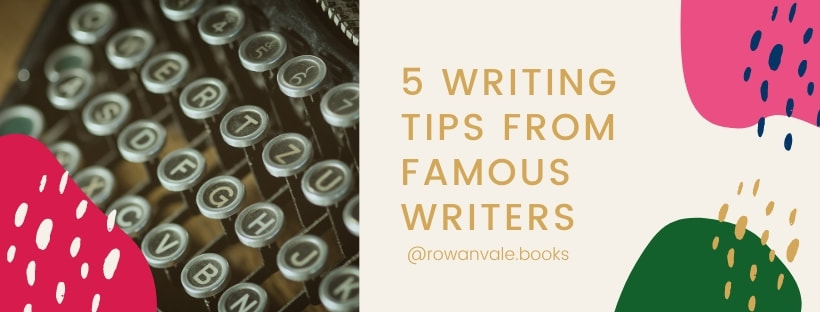|
1. Read, write, then do it again If you want to be a writer, you must do two things above all others: read a lot and write a lot. There’s no way around these two things that I’m aware of, no shortcut. -Stephen King Stephen King outlines the road to writing succinctly. Quite simply, you cannot be a writer if you are not a reader. While there are many ways to refine your writing further down the line, the foundation on which you will build your core understanding will come from those who wrote before you. Learning from this and interpreting it into your own work as you go along will aid greatly in developing your skills as an author. If you feel, however, that you’ve done all the reading and writing in the world yet still you’re missing the mark, our Developmental Editing services can aid in ensuring your writing is mature in its style, structure and characterisation. 2. Write for yourself My advice to ‘up and coming writers’ is, don’t write at first for anyone but yourself. It doesn’t matter how many or how few universities one goes to, what matters is what one learns, either at universities or by oneself. -T.S. Eliot A theory espoused by many successful authors is to write for yourself before you write for others. In a rare response to a fan letter, T.S. Eliot wrote of these beliefs and emphasised the importance of learning from your own experiences while writing for yourself. Through writing in a space that is purely orchestrated for your own purpose, you’ll allow yourself the opportunity to wholly focus on the work you produce. Eradicating external influence and enabling yourself to grow from your own mistakes will prove invaluable as you learn how to best write for yourself and begin to write for others. 3. There’s only one you Start telling the stories that only you can tell, because there’ll always be better writers than you and there’ll always be smarter writers than you. There will always be people who are much better at doing this or doing that – but you are the only you. -Neil Gaiman This tip is something of a classic, and is often a soothing remedy we tell small children to remind them of their brilliance. As adults, we are much the same. Sometimes we find ourselves needing that confidence boost that renews our self-belief, which is exactly what Neil Gaiman seeks to do with this tip. No matter how hard we try to replicate something or someone else, it will never be as good as the original. This is why writing as your authentic self, drawing from your own experiences and conveying your own style, will make for the best stories in the long run. 4. Character likability is optional Likability is a factor when you’re choosing a roommate, but it’s not necessarily a factor when you’re creating a living character. -Margaret Atwood Once you’ve familiarised yourself with your own writing and feel your story is ready to start, developing multidimensional and well-thought characters will demand much of your attention. Many authors might feel character likability is a necessary draw for audiences, though that is seldom the case. Margaret Atwood reiterates the importance of allowing your characters the scope to have some unappealing qualities, just like humans. This can be a difficult balance to strike, which is why at Rowanvale we provide our Beta Readers service that allows your work to be read by our specialist pool of readers. Through this you will receive thorough and constructive feedback that can provide insight into how readers respond to your cast of characters. 5. Show, don’t tell Don’t tell me the moon is shining; show me the glint of light on broken glass. -Anton Chekhov Anton Chekhov famously spoke of the importance of descriptive passages with his perfectly apt use of imagery to capture the brilliance of its effect. While many authors advise against highly embellished language, rarely is there an argument that combats Chekhov’s. Readers seek to be captivated when picking up a new book, which means as an author, it’s your job to ensure they continue to turn the page. We suggest adopting this refined version of ‘show, don’t tell’ to bring life to the stories you write and allow your readers to become engrossed in your words. While you’re here, why not check out a few more of our blog posts here. Alternatively, if you’re interested in the services we offer, our plethora of packages can be found here.
Can’t find what you're looking for? Not to worry! Feel free to contact us at [email protected] or call us on 029 2128 0200 where we are more than happy to answer any other questions.
0 Comments
|
Archives
April 2024
Categories
All
|







 RSS Feed
RSS Feed

